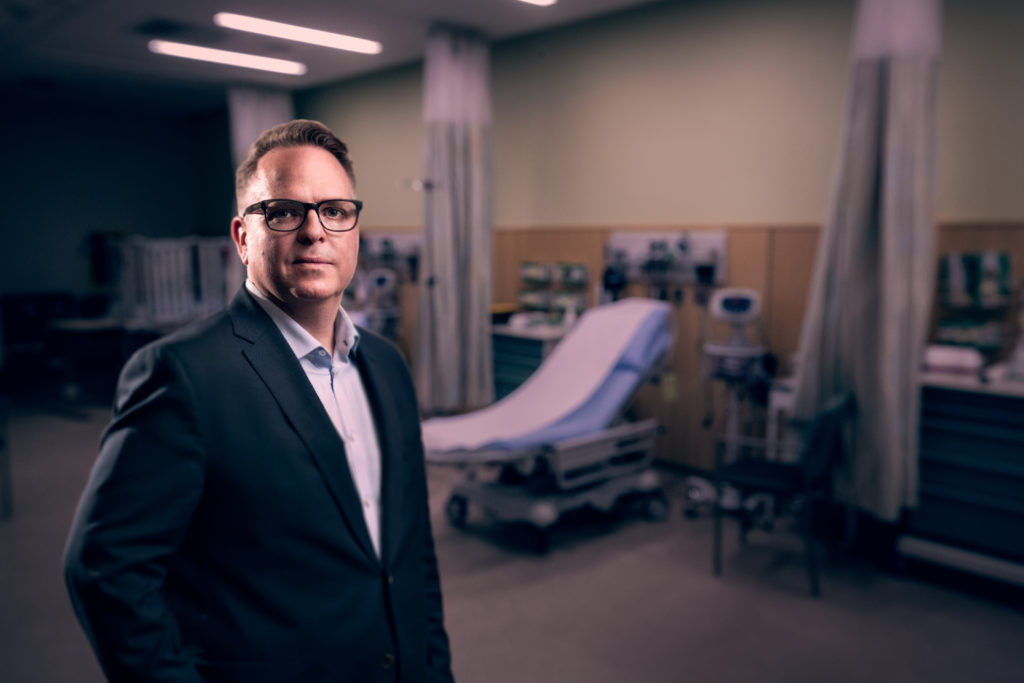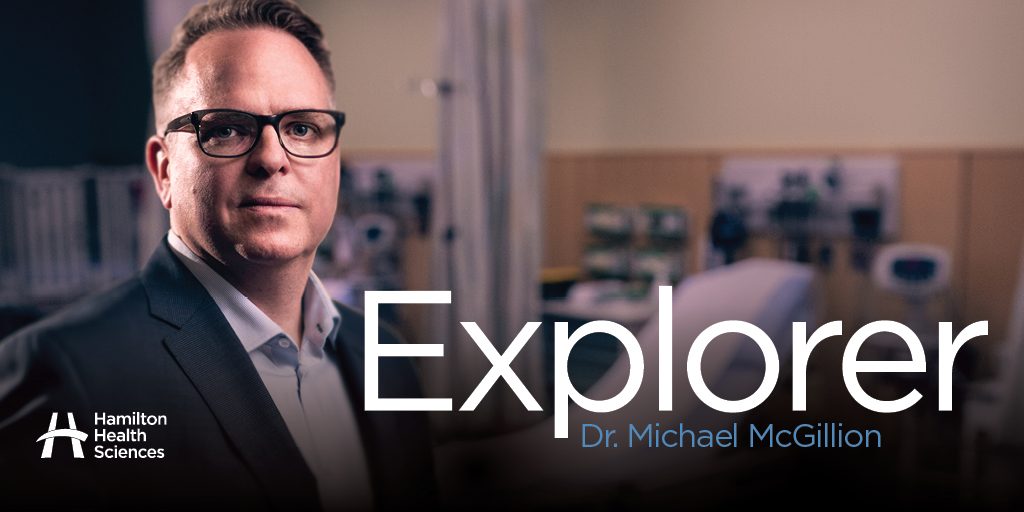
From hospital to home
Imagine having a major surgery and being able to go home only days later. We know that people recover better in their own surroundings, where they’re most comfortable. But, there’s also a higher risk of complications in the first month after surgery. How do we reduce this risk to ensure people don’t end up back in the hospital, while encouraging a better recovery process?
Technology has made its way into every aspect of our lives. Now, it’s helping healthcare professionals answer important questions like this one.
Researchers at the Population Health Research Institute of Hamilton Health Sciences (HHS) and McMaster University have developed a potential solution to bridge the gap between hospital and home for patients who undergo major surgery. The SMArTVIEW project utilizes unique Philips’ technology to wirelessly monitor patients vital signs on the ward, as well as a hospital-to-home system to track a patient’s vital signs once they’ve gone home and alert the hospital team to any patient flags. The system is currently being tested in a formal research trial to determine whether it could help prevent hospital readmissions and the many complications and, in some cases, deaths that can happen in the weeks after heart surgery.
“We’re empowering the patients to take control of their recovery and help them every step of the way.”
“In the operating room and intensive care unit (ICU), patients are closely monitored and the surgical team can act quickly if problems arise.” says Dr. Michael McGillion, principal investigator for SMArTVIEW. “We also need systems that can monitor patients closely on the surgical ward and at home, beyond the operating room and ICU. We still need the ability to monitor closely and intervene before serious complications occur.”
A crucial aspect of the SMArTVIEW model is the team of registered nurses who follow patients through the entire recovery process and, with the support of the mobile technology, ensure that any issues are addressed quickly. As the SMArTVIEW system collects patient data, it identifies abnormalities that could be the first warning sign of a complication and prioritizes patients accordingly for the nursing team’s review. It’s exciting for the SMArTVIEW nurses. Typically their relationship with the patients ends when they leave the hospital, but with SMArTVIEW, they can continue to help the patients once they’re home.
“We get to use the full scope of nursing practices and are more involved in the patients’ recovery than ever before,” says Natalia Worek, registered nurse, SMArTVIEW project. “It’s so rewarding to be part of the entire process and reach recovery milestones with them.”
“It’s so rewarding to be part of the entire process and reach recovery milestones with them.”
“We’re empowering the patients to take control of their recovery and help them every step of the way. We’re not only reviewing their vitals, but helping them set and achieve goals, no matter how big or small. We want to ensure they can get back to their regular lives,” says Filomena Toito, registered nurse, SMArTVIEW project.
The SMArTVIEW system goes beyond tracking vitals: it’s also a self-management system that includes information on what to expect in recovery, healthy practices for best recovery, goal setting, a messaging system with the nurses and an open forum to have dialogue with other patients in recovery. Also, part of the SMArTVIEW trial includes a daily video chat with one of the nurses to ensure patients are on track.
“It’s a more holistic approach. We talk to them about their sleep, nutrition, pain management, physical activity and well-being. These all play a part in the recovery process,” says Karyn Barrett, registered nurse, SMArTVIEW project. “On top of that patients can ask questions that may have otherwise caused them to go see a doctor.”
Successful integration of new technology in to healthcare practice requires the support and expertise of a large team that extends beyond healthcare providers and includes IT, biomedical technology and informatics professionals.
“As nurses, we have no idea how to develop this kind of technology. Likewise, developers aren’t experts in caring for patients,” says Carley Ouellette, registered nurse, SMArTVIEW project. “But working together, we can have a real impact on people’s lives.”
Acknowledgements:
The SMArTVIEW project is in partnership with project contributors Philips Healthcare, QoC Health Inc., ThoughtWire Corp, CloudDX, XAHIVE Inc., Argyle Public Relationships, and Ontario Telemedicine Network. The project is funded by the Canadian Institutes of Health Research, the Ontario Centres of Excellence, and the Hamilton Health Sciences Research Strategic Initiative (RFA).
Research at Hamilton Health Sciences is conducted in partnership with McMaster University.

